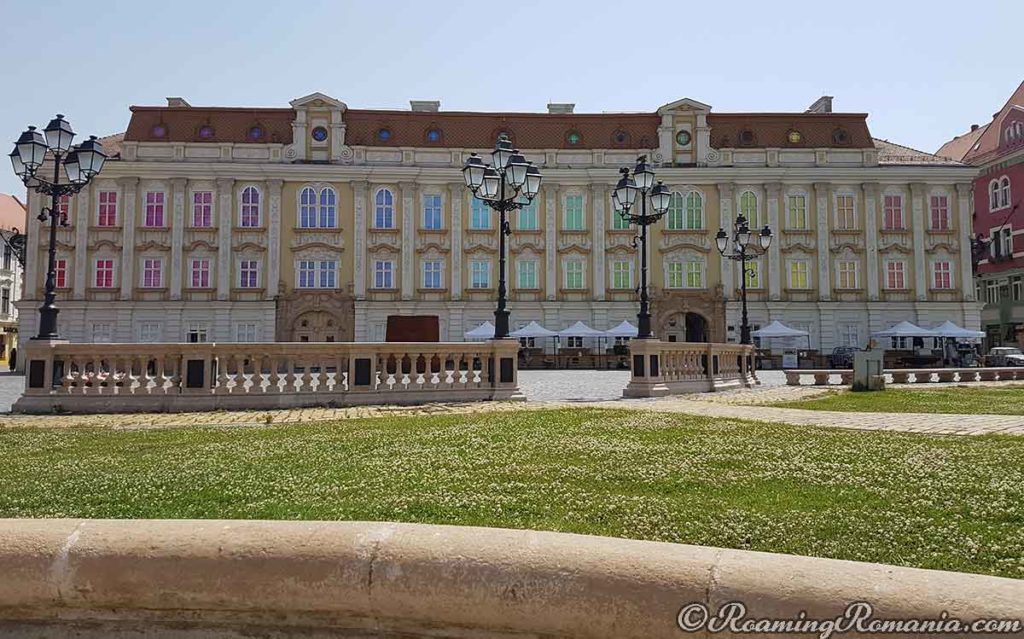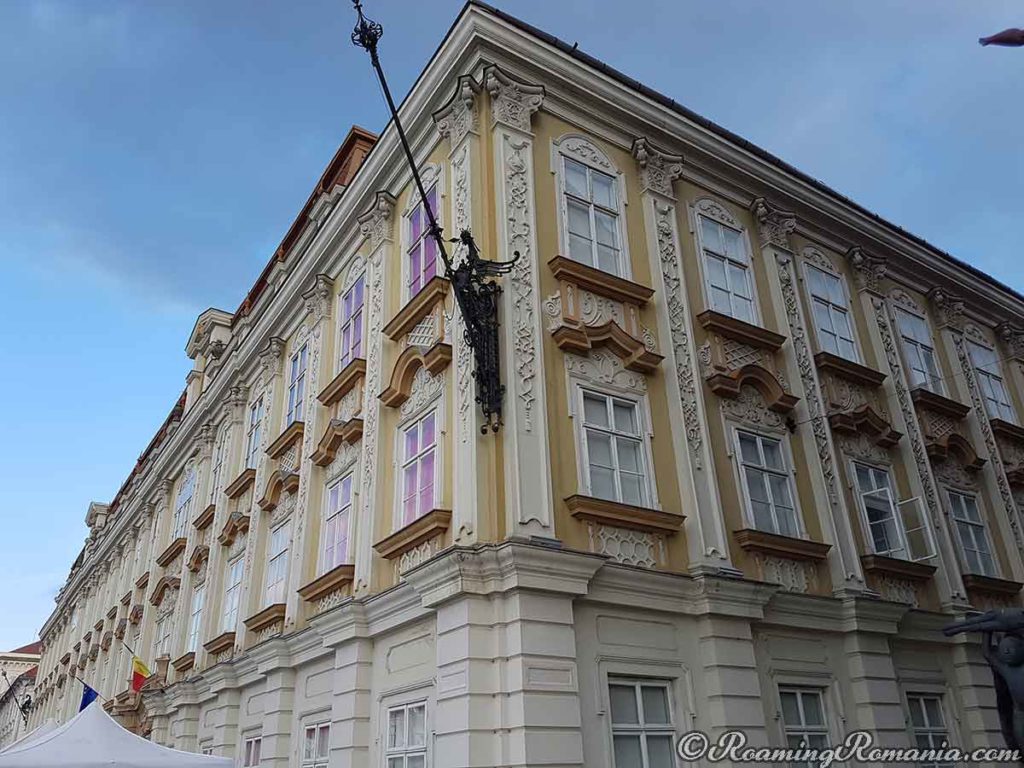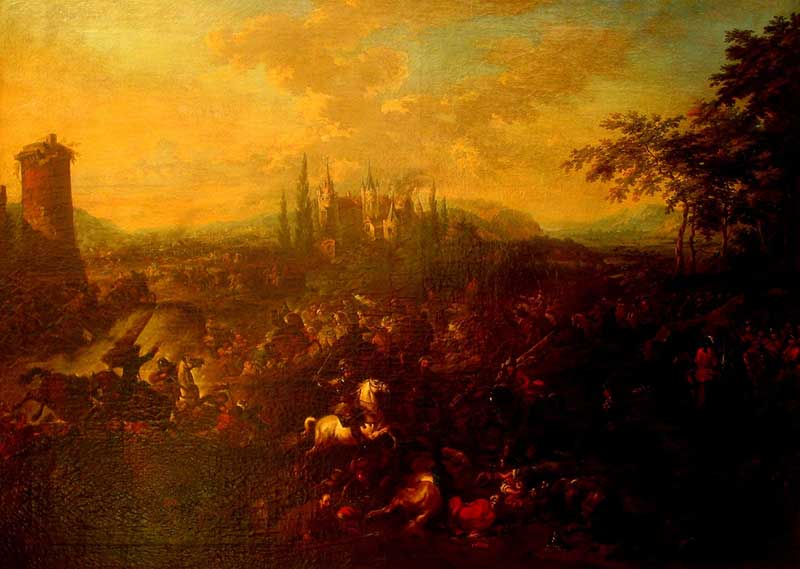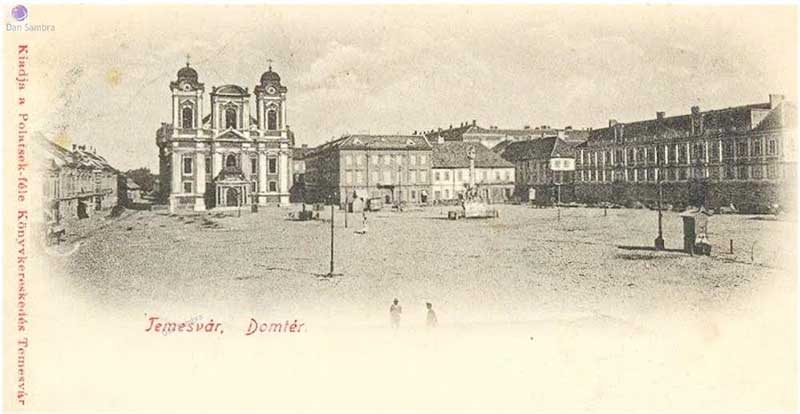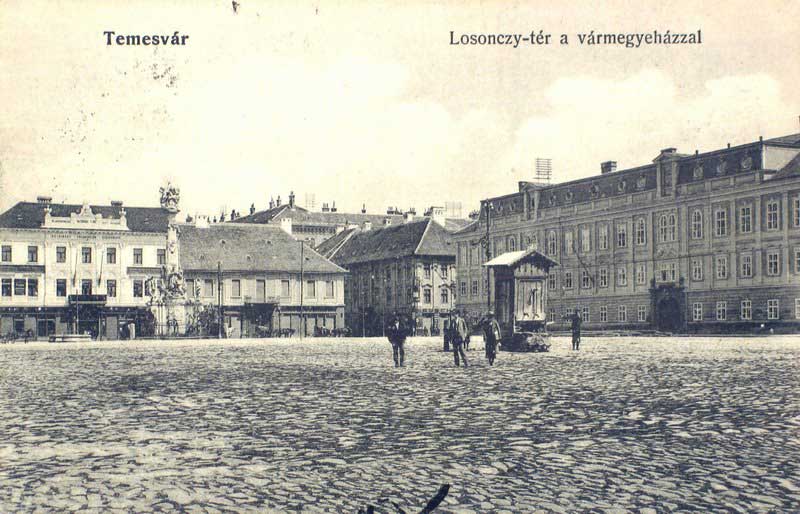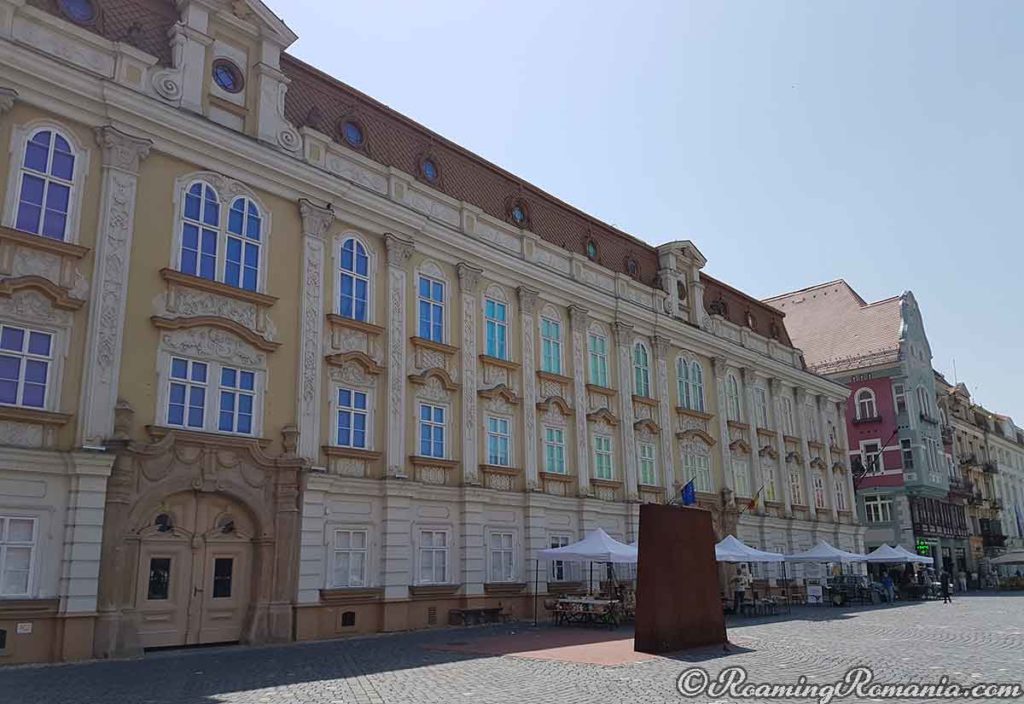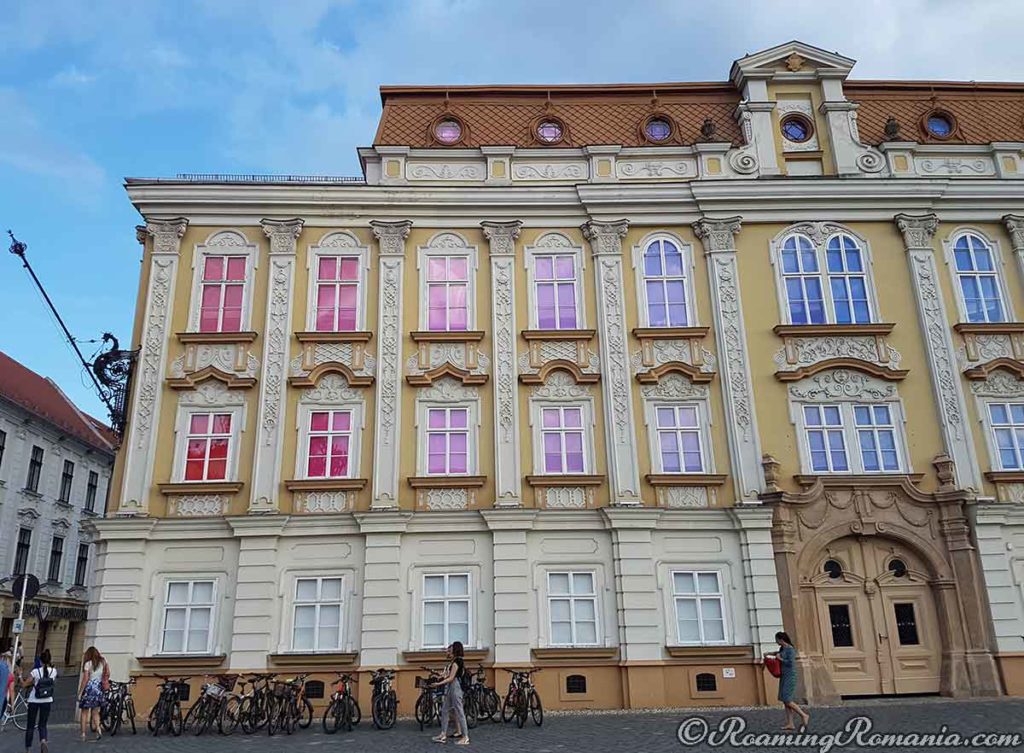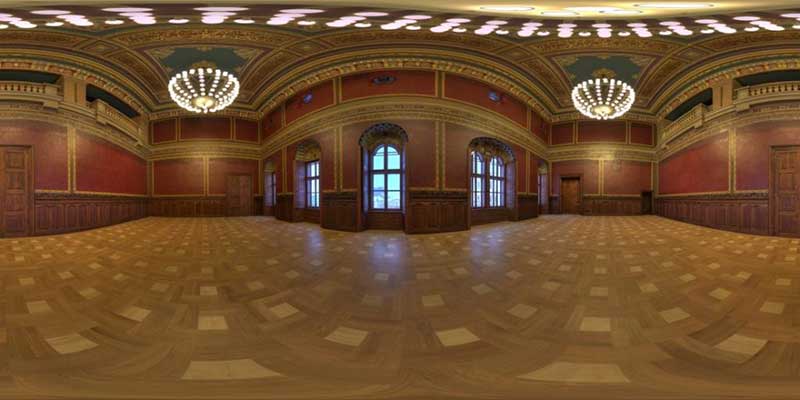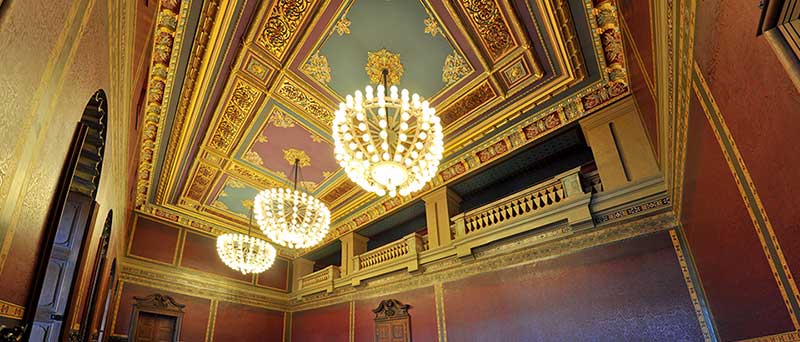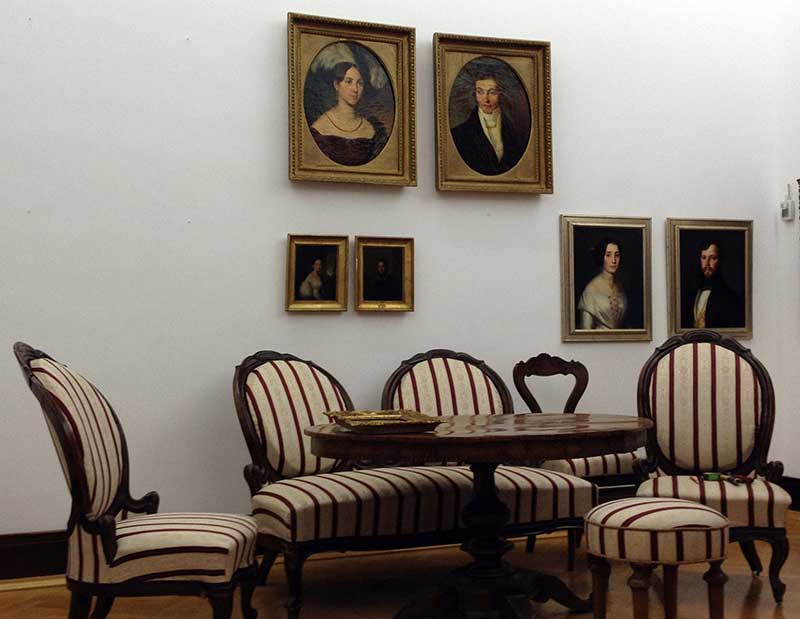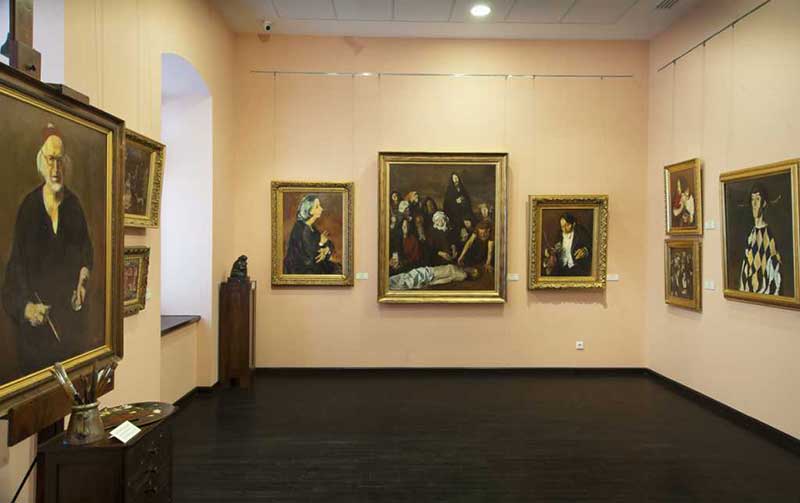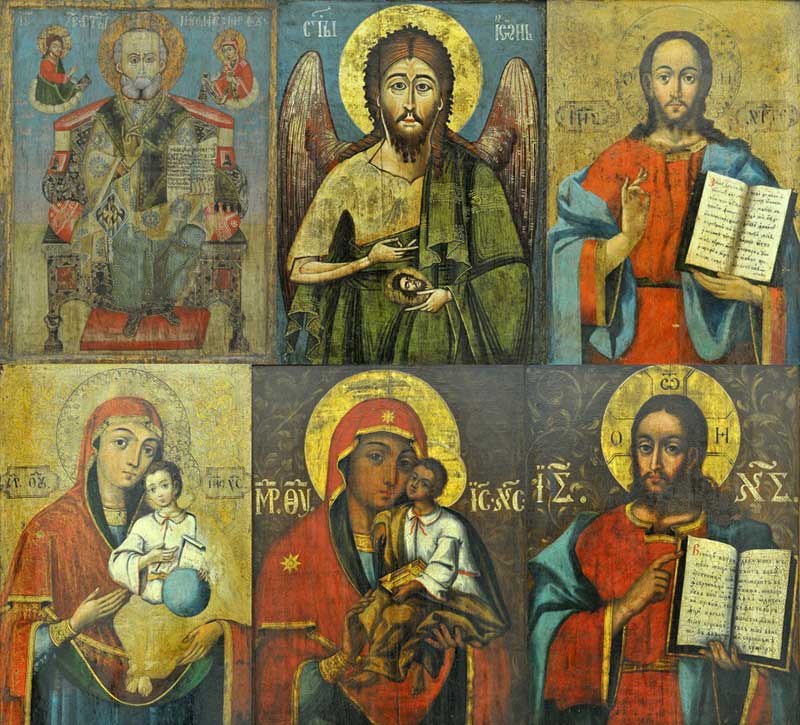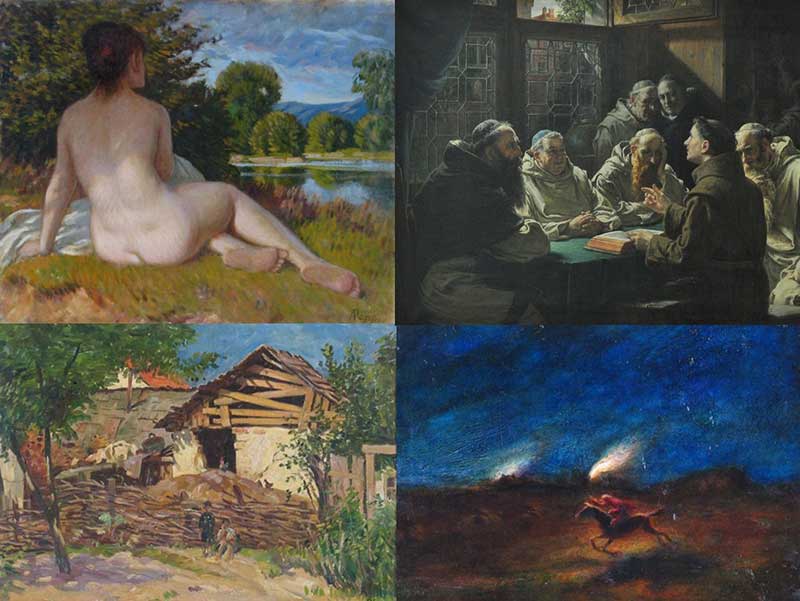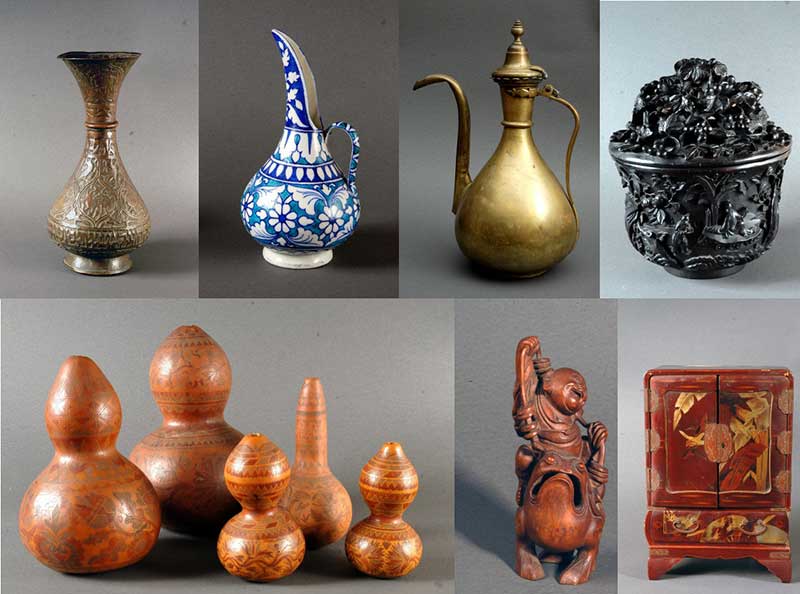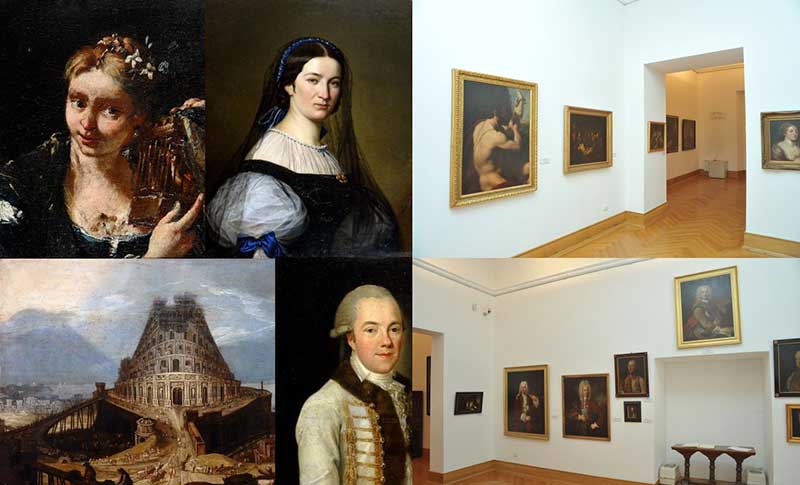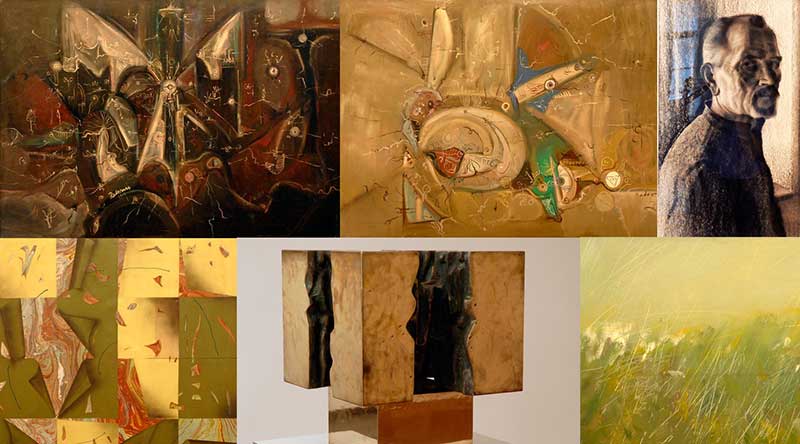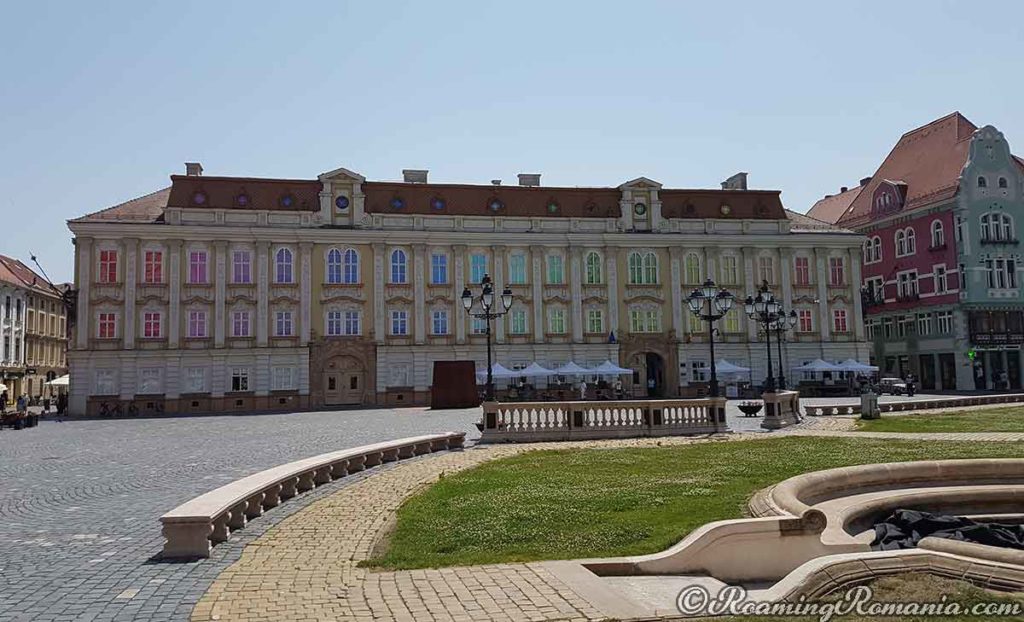Baroque Palace Timisoara – Summary
The Baroque Palace (Palatul Baroc) is an 18th-century Baroque style palace located in the city of Timisoara, Romania. The palace has a long and fascinating history that matches up with the development of Timisoara. The building alternated functions and purposes numerous times throughout the years. During certain time periods, the Baroque palace functioned as the administrative building and living headquarters for the city’s governor, other times as a University, it once served as a military base for the Soviet army, and it presently houses the art Museum of Timisoara.
During its early decades, the palace was one of the most representative Baroque buildings in the city. However, over the years the building had been altered, extended, and modified. The magnificent palace still contains many dominant Baroque features, but the structure also contains other architectural elements that were applied during later time periods. The Baroque Palace is a breathtaking sight to behold and one of the must-visit destinations in Timisoara. The Art Museum found within holds some of the region’s best-kept treasures.
Baroque Palace Timisoara – Table of Contents
- Baroque Palace Timisoara – History
- Baroque Palace Timisoara – Architecture
- Baroque Palace Timisoara – Baroque Hall
- Baroque Palace Timisoara – Art Museum
- Baroque Palace Timisoara – Video
- Baroque Palace Timisoara – Visitor Info
Baroque Palace Timisoara – History
In 1716, Austrian troops led by Prince Eugene of Savoy defeated the Ottomans at the Battle of Petrovaradin and won the Austro-Turkish War of 1716–1718. The defeat saw the Ottoman’s 164-year rule of the land come to an abrupt end. The two sides signed the peace Treaty of Passarowitz on July 21st, 1718 in Požarevac, Serbia. The treaty took land from the Ottoman’s and gave the Habsburg empire control over the Banat region, as well as territories throughout modern-day Serbia. Following the signing of the treaty the Habsburg Empire set up a province in Banat known as the Banat of Temeswar.
The capital of the military administrative Banat of Temeswar was the city of Temeswar (Timisoara). The region remained a military administration until 1751 when Empress Maria Theresa of Austria introduced civil administration to the province. The first civil governor of Timisoara was Francesc de Vilana Perlas, son of the nobleman, and Spanish Secretary of State to Emperor Charles VI, Ramon de Vilana Perlas. Around the same time, city officials decided to erect an administrative building in Timisoara’s city center Dom Market Square (Union Square). The construction of the administrative headquarters would coincide with the development of the square’s Roman Catholic Dome, and Serbian Cathedral.
The city officials chose the south park of Union Square to build the governor’s headquarters. The area the administrators selected contained the city’s mining office and military cashier buildings. In 1754, the facing walls of the two buildings were torn down and combined to form a single structure that eventually got built into, what was known at the time as, the Presidential Palace (later the Baroque Palace). The building served as the administrative unit for the Banat of Temeswar until 1778, when the territory was annexed into the Habsburg Kingdom of Hungary, and the palace became the headquarters of the regions Prefecture.
After the Hungarian Revolution of 1848-49, the Baroque Palace became the administrative building for the new Austrian Empire province known as the Voivodeship of Serbia and Banat of Temeschwar. The joint voivodeship operated, with the palace as the “Grand Voivod’s” seat, from 1849 to 1860, when it was abolished and incorporated into the Kingdom of Hungary. From 1860 to 1919 the palace served as the seat of the county house. From 1919, when the Timiș County was known as Timiș-Torontal County, up until around the start of WWII in 1939, the Baroque Palace again served as the region’s Prefecture.
At the end of the Second World War in 1945, the palace, which had been commandeered during the war, became the command center for Soviet troops that were stationed in Timisoara. The Soviets occupied and used the building until 1958. A few years after the troops departed, the Faculty of Agronomy of the Polytechnic of Timisoara was established inside the Baroque Palace. The school operated under that name for a few years before becoming the University of Agronomy and Veterinary Medicine. From 1979 to 2006, restoration projects were slowly carried out on the Baroque Palace to transform it into the Banat Art Museum.
Baroque Palace Timisoara – Architecture
After the Habsburg Empire reconquered Timisoara from the Ottomans in 1716, they set about to completely redesign and modernize the city to fit an urban landscape. Planners arranged the city in rectangular street networks that would host the city’s markets and squares. New buildings, churches, and infrastructure was constructed and erected throughout the city’s various neighborhoods. It was a time period when Timisoara defined its personality with the use of the popular central European Baroque style.
The Baroque style is defined by the use of many unique characteristics compared to other architectural styles. Baroque favors using a spatial hierarchy to give off the impression of a dominant size encompassed throughout all the buildings floors. The ground floor of Baroque structures often contains commercial or administrative units. Living headquarters inside Baroque buildings face, and open to, pedestrian streets. Baroque edifices are composed of symmetrical façades, vertically and horizontally structured by pilasters, holes or cornices.
The original Baroque Palace, formally known as the Prefecture’s Palace, encompassed all the main characteristics of the Baroque style. However, the building which presently stands today in Timisoara didn’t always have the exact design it has today, in fact, it underwent numerous changes throughout the years before reaching its final form. The original Baroque Palace was designed by an unknown architect and constructed in 1754 out of the preexisting mining office and military cashier buildings known as the “Casa Camerală”.
Baroque Palace – Architectural Evolution
The Baroque Palace of 1754, was formed into a two-story building. The ground floor contained the offices of the chancellor and other city administrators, and the second floor contained their living headquarters. The building’s main entrance was through a mascarón portal on its west side. The portal has been preserved to this day as a window. The palace had an arched composition that resembled a basket handle, highlighted by a simple profile and a classic garland inspired by the imperial Baroque.
The palace’s façade was sumptuously decorated in a Baroque design, its pillars, parapets and window coronations contained a grand display of alternating knitted fabrics. In 1774 the Baroque Palace was expanded and a second inner courtyard was added. The knitted design on the palace’s façade was also replaced and simplified, by the use of plant motifs on the building’s pillars. From 1849-1861, the palace largely remained unchanged, with the exception of some small repairs that were carried out in 1858.
From 1885-1886, led by architect Jakob-Jacques Klein, the Baroque Palace underwent a major transformation which gave it the shape it has today. The modifications were made as a tributary of the new tastes of the times. The new style relied on a restoration process known as “stylistic cleansing” and deterred away from the previous Baroque style that was seen as the “ordinary Zopf style.” The palace’s courtyards were joined, its roof was mansarded, the rooms were partitioned, and the façade’s Baroque decorations were replaced with sgraffito decorations.
Baroque Palace – Baroque Hall
The inside of the Baroque Palace in Timisoara contains a massive and extraordinarily beautiful Baroque Hall. The hall, known as the “grand hall of honor”, dates back to 1754, when the palace functioned as the residence of the Banat Governor, Count Vilana Perlas. At the time, the building’s main entrance was on its west side, off of present-day Florimund Mercy Street, the Baroque Hall is located on the floor directly above this former western entrance portal.
The Baroque Hall gets its name from the Baroque specific design and elements it was fashioned from. The hall contains festive attributions, specific to the provincial baroque palaces of the past. The hall’s woodwork consists of wainscoting, its doors and window frames contain decorative rococo motifs. Throughout the ages, the Baroque Hall has hosted many great musicians and concerts. On November 2, 1846, the prolific Hungarian composer Franz Liszt put on a captivating performance at a concert in the hall.
Baroque Palace Timisoara – Art Museum
The inside of the Baroque Palace contains the Timisoara Art Museum (Muzeul de Artă Timișoara). The museum was established in 2006 after it was detached from the art section of the Museum of Banat (previously hosted in the Baroque Palace) and became its own standalone museum. The art museum is famous for hosting a unique collection of works and personal belongings of the renowned painter and portraitist, Corneliu Baba.
The Timisoara Art museum contains other notable sections which host old Banat, contemporary, decorative, and European art collections. Throughout the year the Art Museum also hosts many different temporary exhibits. Often times the temporary exhibits are displayed right outside of the palace directly in the high foot traffic of the Union Square. Information on temporary exhibits can be found on the museum’s site.
Corneliu Baba Collection
The Corneliu Baba Collection in the Timisoara Art Museum includes 90 total items. Most of the items in the collection are paintings that were created by the famous artists. The remainder of the display contains personal objects that once belonged to Baba. A large portion of the paintings were donated to the museum by Baba’s widow, the remaining were loaned from the National Museum of Art in Bucharest.
Among the Baba collection’s most famous paintings are the, 1954 Odihnă pe camp (Resting in the Field) and the 1943 Întoarcerea de la sapă, (Returning from the Dig). The collection also contains; detailed self-portraits, the famous paintings, Rege nebun (Crazy King), and, Arlechin (Harlequin), depictions of beautiful Spanish landscapes, as well as, portraits of historically famous Romanians such as Tudor Arghezi and George Enescu.
Old Banat Art Section
The Old Banat Art Section of the Timisoara Art Museum contains over 1,000 different items that originate from as early as the beginning of the 18th century and spans across to items that were created in the 20th century. The collection started in 1928, when art historian Ioachim Miloia initiated a campaign to track down, rescue, and preserve heritage items throughout Banat, especially items from old village churches. Miloia’s efforts proved successful, donations and contributions from parishes priests throughout the years saw his collection greatly grow in size and diversity. The large collection became known as the “ecclesiastical art” fund.
The majority of items in the Miloia collection are religious wooden icons that were created in Romanian workshops throughout Wallachia, Transylvania, and Maramureş. The collection provides an opportunity to look at a historical snapshot of the religious preferences of the Romanian, Serbian, and Macedonian founds of Banat. The Old Banat Art display showcases the evolution of art in the region, it shows the transition from traditionally painted icons, to the 19th-century icons that incorporated the technique of easel painting. Famous artists whose works are included in the collection include Alexandru Efremov and Marius Porumb.
The Old Banat Art section also contains displays of paintings, drawings, and other works of art that originated from prominent artists that were born or educated in the Banat region. The collection also contains works that are considered “unsigned” or having been created by artists who’ve remained anonymous. The pieces in the collection came from many different sources, some works were donated, others were purchased from antique shops, private sellers, direct from the artists, or from art exhibitions. Some of the paintings in the collection include paintings of, feminine females, villages, landscapes, and portraits of historical figures.
Decorative Art Section
The Decorative Art section in the Timisoara Art Museum was started by Zsigmond Ormós, the museum’s founder. Ormós put in great efforts to collect as much decorative art to showcase in the museum as possible, he felt it was essential for a successful museum to contain and display a diverse range of objects. The Decorative Art section was completed throughout the 20th century and contains around 1,500 objects. The items were acquired through donations, transfers, and purchases.
The objects showcased in the section originated from structural interiors of buildings throughout Banat. The items came from mansions, castles, private estates, palaces, churches, and from the collections of private individuals. The objects are divided into sub-categories and contain items such as furniture, ceramics and porcelain, glassware, watches, and metal and textiles. Other objects include things such as jewelry boxes, vases, figurines, and wooden spindles. The objects provide a glimpse into the interiors of the 18th to 20th century Banat.
European Art Section
The European Art section contains a vast amount of paintings credited to some of Europe’s most prominent artists. The historical paintings date from as early as the 15th century to as recent as the 18th century. The beautiful works are categorized in sections pertaining to the European countries they originated from. The wide-ranging pieces come from artists who specialized in different schools of art, they include works of Venetian, Renaissance, Florentine, Baroque, Flemish, and Barbizon schools. The genres of the works include history, portrait, genre, landscape, and still life.
Each section attributed to its corresponding European country contains masterpieces created by artists who originated in the regions. The Netherlands section contains a 15th-century representation of the Tower of Babel attributed to Geerhard van Haarlem. The German section has a remarkable Renaissance depiction of a nude Adam and Eve in the garden of Eden. The Hungarian section contains a magnificent 20th-century work, done by Gyula Aggházy, known as the “Executor” painting. The French section contains one of Narcisse Virgilio Díaz’s most famous paintings, the gloom and eerie “Forest in Fontainebleau.”
Contemporary Art Section
The Contemporary Art section of the Timisoara Art Museum is comprised of 8 different sections which contain various art pieces that were collected over time. The works represent the different directions and styles of art that came to the forefront during the mid to late 20th century of Timisoara’s art scene. In the 1960s, Timisoara attracted a diverse set of talented artists from all over Europe who came to experiment with new avant-garde forms of art. Around this same time, a group of up and coming artists in the city formed the artistic partnership known as the 111 Group.
The members of the 111 Group went on to create new and innovative masterpieces of art. They experimented with new techniques and methods to create forms of contemporary art the likes of which had never been seen before. The group experimented with abstract shapes, created monochrome monotypes, and dabbled in developing constructivist collages. The 111 Group grew in prominence and became internationally known in the art scene after they exhibited their masterpieces at the Kalinderu Hall in Bucharest in 1968. The groups most famous works are preserved and displayed in the Contemporary Art section in the Timisoara Art Museum.
Baroque Palace Timisoara – Video
Coming Soon
Baroque Palace Timisoara – Visitor Information
Location
The Baroque Palace is found in Timisoara’s Union Square at the Address: Piața Unirii 1
Visitation
Tourists are welcome to visit and photograph the palace’s exterior during any day and time of the year. Access to the Palace’s interior is however limited to working business hours.
Museum tickets can be purchased at the Baroque Palace’s entrance from 10:00 am to 5:30 pm
Museum Hours
| Monday: | Closed |
| Tue-Sun: | 10:00 am to 6:00 pm |
